Wallpaper* and AHEC present Discovered at the Design Museum
Ahead of the exhibition at the Design Museum (13 September-15 October 2021), we catch up with designers Tomoko Azumi, Maria Jeglinska-Adamczewska, Nathan Yong and Adam Markowitz, the four mentors from Discovered, an initiative from Wallpaper* and AHEC to support the next generation of designers

Wallpaper* and AHEC announced Discovered, a platform to support design’s next generation, in October 2020. Fast forward to ten months later, and the group of 20 international designers from 16 countries have created a series of works that not only consider the structural and expressive qualities of American hardwood, but also explore how our everyday objects help us reconnect and combat isolation in a pandemic-hit, increasingly virtual world.
Created over several in-depth virtual meetings with four international mentors – Tomoko Azumi, Maria Jeglinska-Adamczewska, Nathan Yong and Adam Markowitz – and manufacturing workshops in England, Portugal, Malaysia and Australia, the 20 projects are ready to be presented through an exhibition at London’s Design Museum (13 September-15 October 2021).
Design development and mentoring process
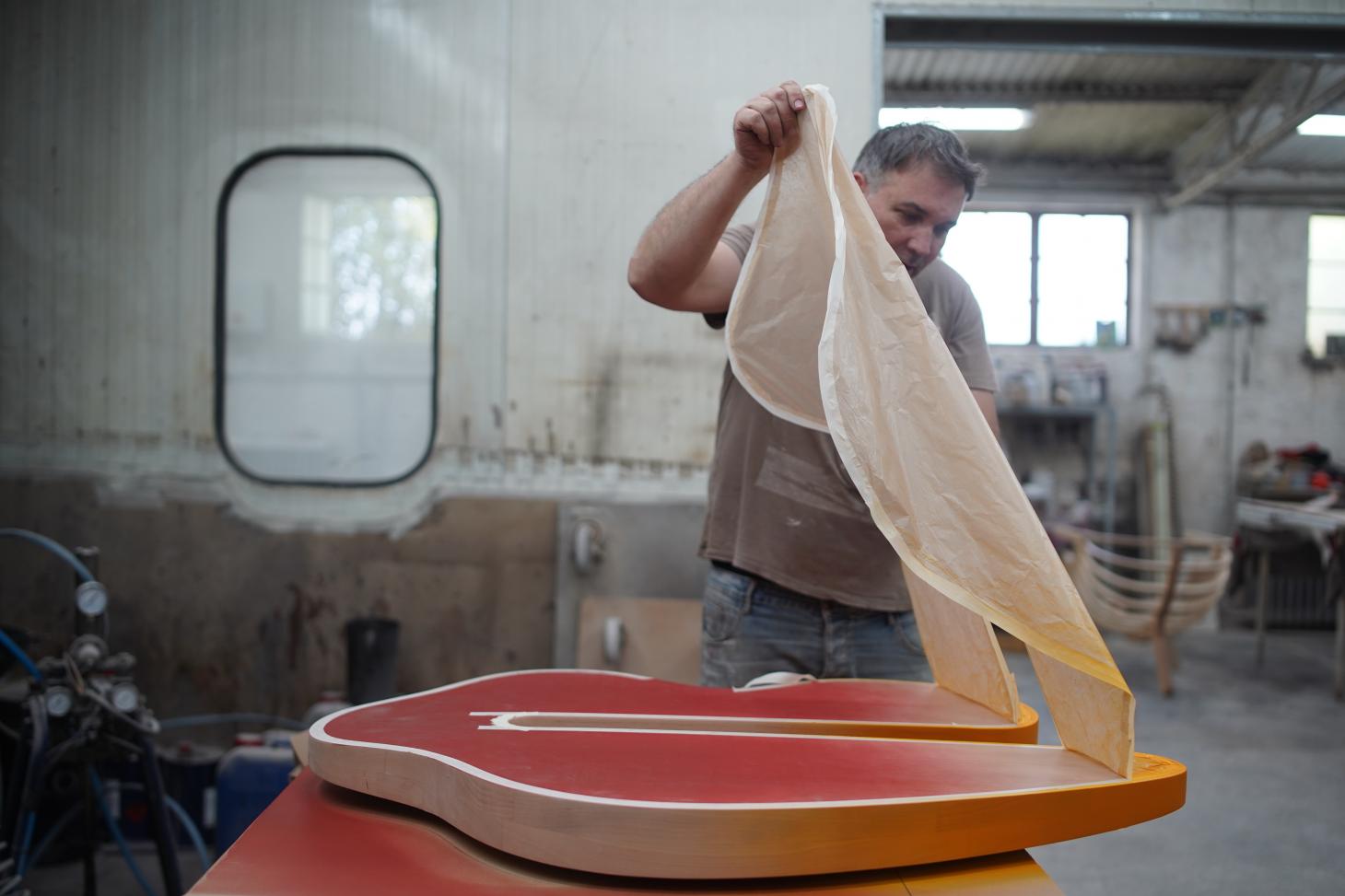
‘Presences’, by Isabelle Baudraz, at WeWood, Portugal
With a focus on American red oak, maple and cherry, each designer created an object that responds to their unique experience of a pandemic world. Participants were invited to think freely about their experience of living and working in isolation, and to create a piece that represents the functional and emotional connections to our everyday objects. Through their projects, they explored their own personal and cultural background, or involved their families into the design process. The diverse inspirations for each piece came from everyday life and from a desire to connect with nature and the outdoors.
‘To me, this has been a process to discover what’s really going on in the design world. It was so fresh, and nice to meet with talented young designers,’ said Azumi, noting how working closely with the designers she mentored over several months resulted in a two-way exchange, allowing her to learn about her own design and craft as well.
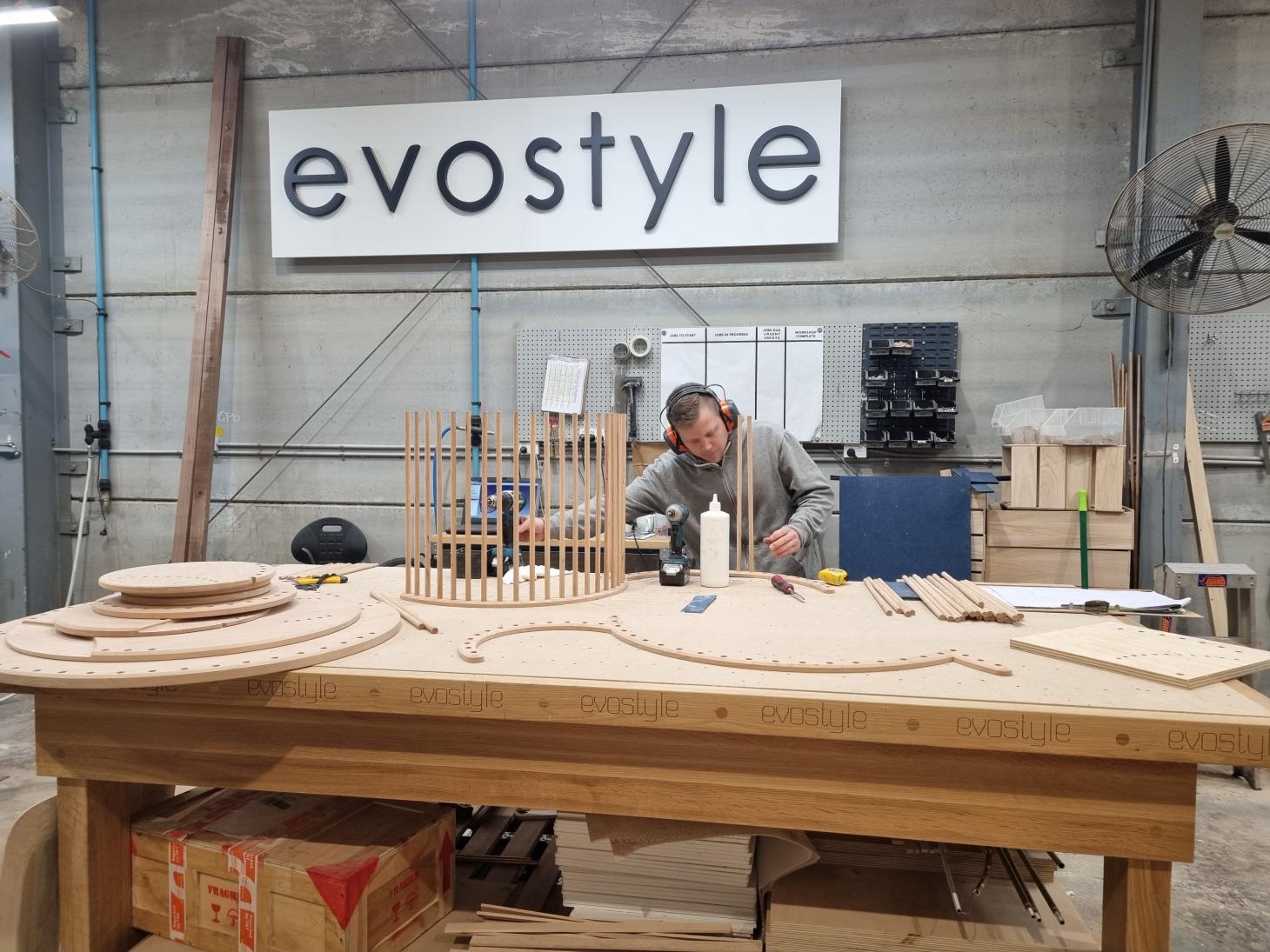
‘Iuxta Me’, by Vivienne Wong, at EvoStyle, Australia
Each mentor worked with five designers from a specific region, offering guidance through every step of the process up to the finished prototype. ‘I tried to question the status quo of their projects and really see how they could develop them: some were very super precise from the beginning in what they wanted,’ says Jeglinska-Adamczewska. A similar approach was shared by Markowitz: ‘a lot of them actually had very preconceived ideas, and one thing that I attempted to do is get them to get rid of those, and take a step back.’
Shown together for the first time in September 2021, the 20 projects form an exciting panorama of current emerging design thinking. ‘It's been really meaningful, especially to re-asses what we have been doing as humankind: as designers, we have been churning out things, and I think we need to take this time to re evaluate what we are doing and what we have been contributing to society as a whole,’ says Yong. ‘So I thought this was a really good brief for the young designers to look at what they can give back to the world.’
Discovered: a sneak peek of the projects
Receive our daily digest of inspiration, escapism and design stories from around the world direct to your inbox.

Sizar Alexis, Lahmu
Eskilstuna, Sweden
Wood: Cherry and scorched red oak
Having lived through the Iraqi war in the 1980s, Alexis imagined his home as a bunker, protecting his family and newborn son during the pandemic. Drawn to the similarities between his own childhood experience and his young son’s, his sculptural pieces are defined by stark monolithic forms and stillness. The chunky volumes of the designs serve as a storage cabinet and a bench, and were inspired by bunker architecture.
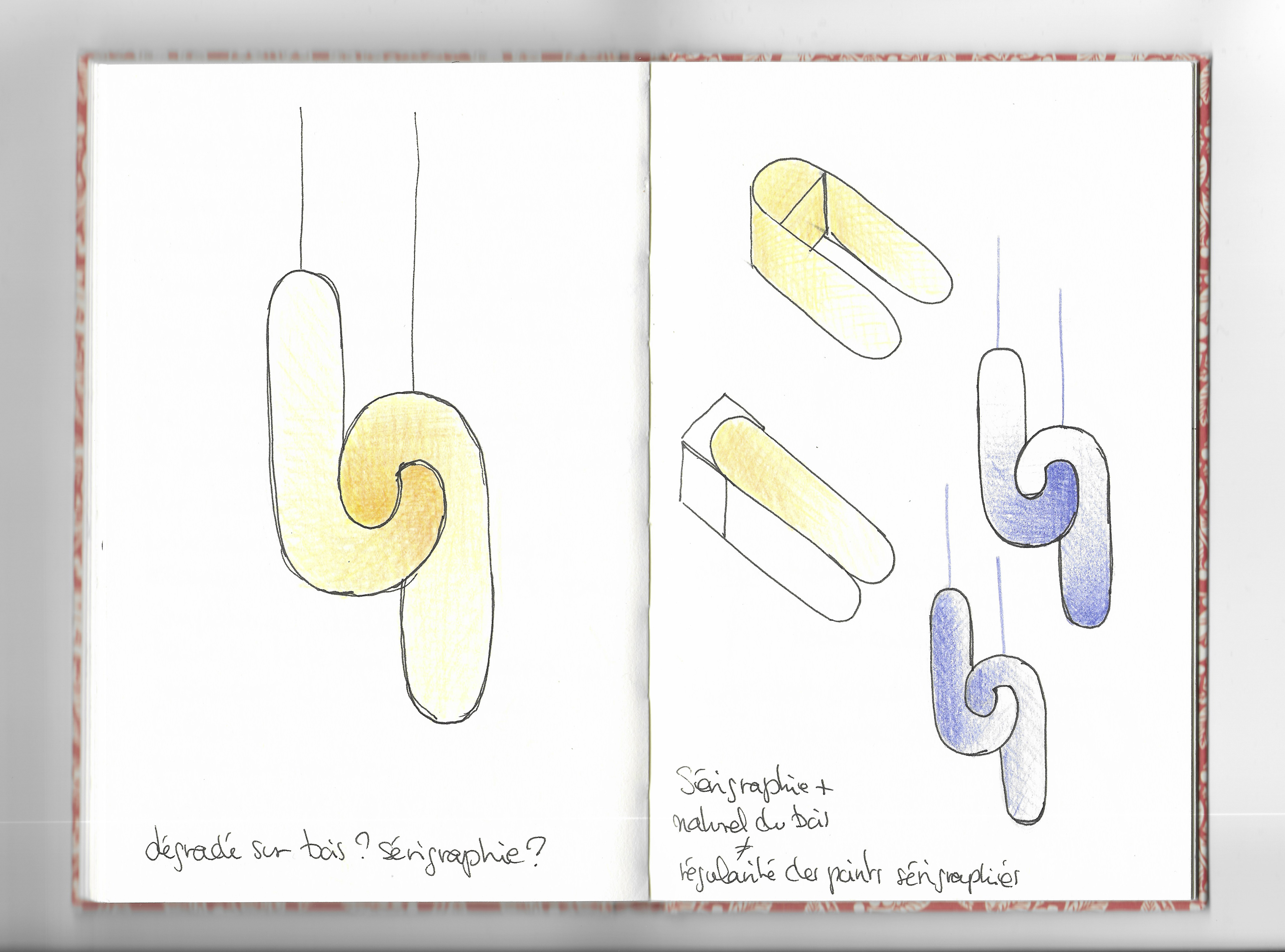
Isabelle Baudraz, Presences
Lausanne, Switzerland / Athens, Greece
Wood: Cherry
Fighting a feeling of isolation, Baudraz recreated tactile and emotional connections through her four objects. Inspired by the idea of bringing natural movements and forms into the home, her collection includes two suspended mobiles, a desk object, and a wall-mounted installation designed to create moments of tactile connection during days in isolation.
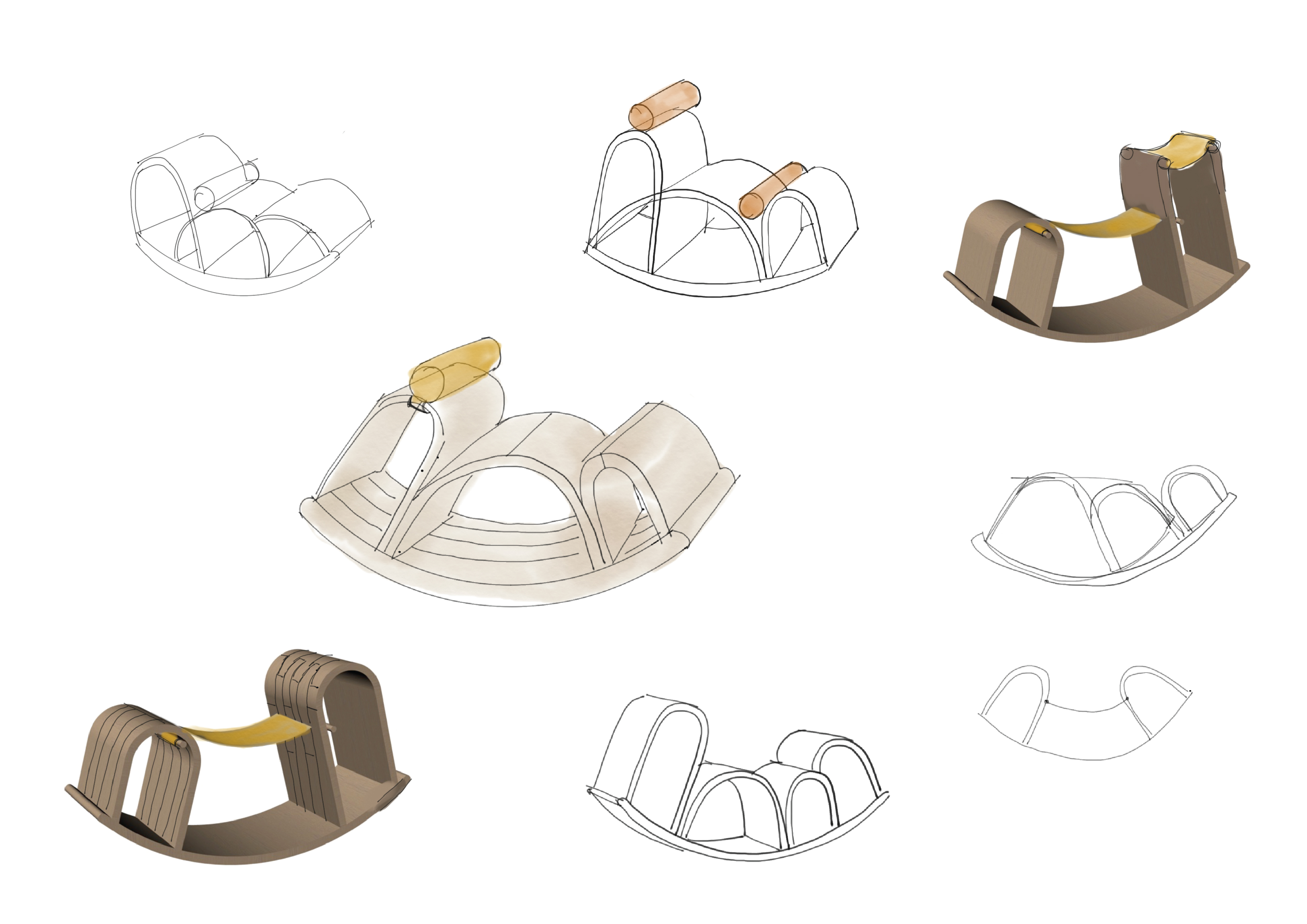
Nong Chotipatoomwan, Thought Bubble
Bangkok, Thailand
Wood: Red oak
A nostalgia for travelling and social interaction guided Chotipatoomwan’s creative thinking through her project. Physical transitions were replaced with changing states of mind, and the physical realm merged with the psychological realm through domestic space. The designer looked at furniture created for relaxation, and landed on a rocking motion, which became the basis for her chair, offering a mix of relaxation and repetitive movement to enhance mindfulness.
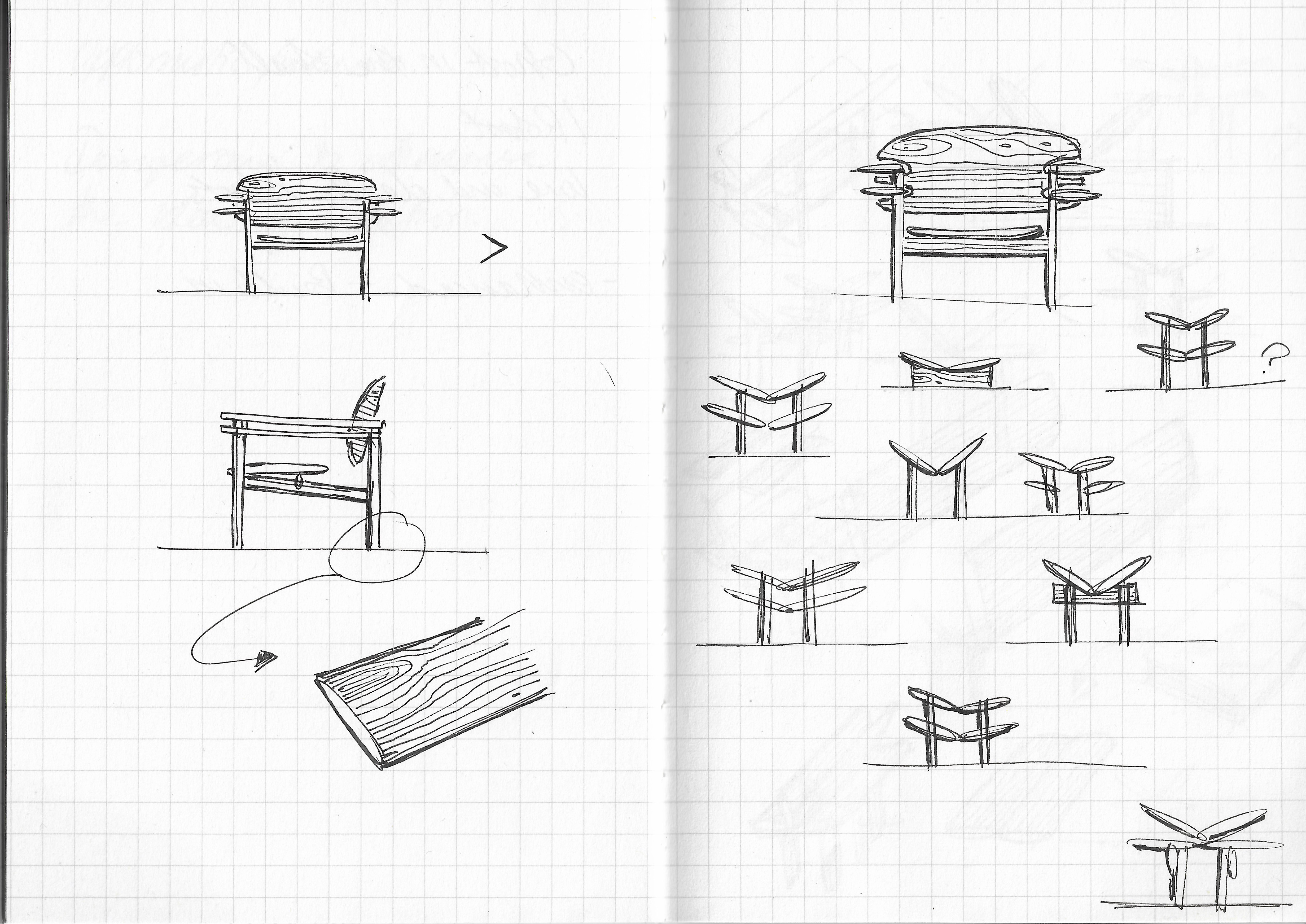
Mac Collins, Concur
Newcastle, UK
Woods: Cherry
While the term ‘isolation’ has acquired negative meaning over the course of the past year, for Collins, the word carries positive meanings. ‘For me, the word has always carried romanticised connotations of contentment, serenity, contemplation and a sense of withdrawal from the rigmarole of socially prescribed routine,’ he says. During his time alone, books became precious companions, and this inspired him to create a place for reflection and reading. His immersive double-armrest lounge chair (and bookrest ‘companion object’) encourages the sitter to tune out of daily life and focus on an analogue task.
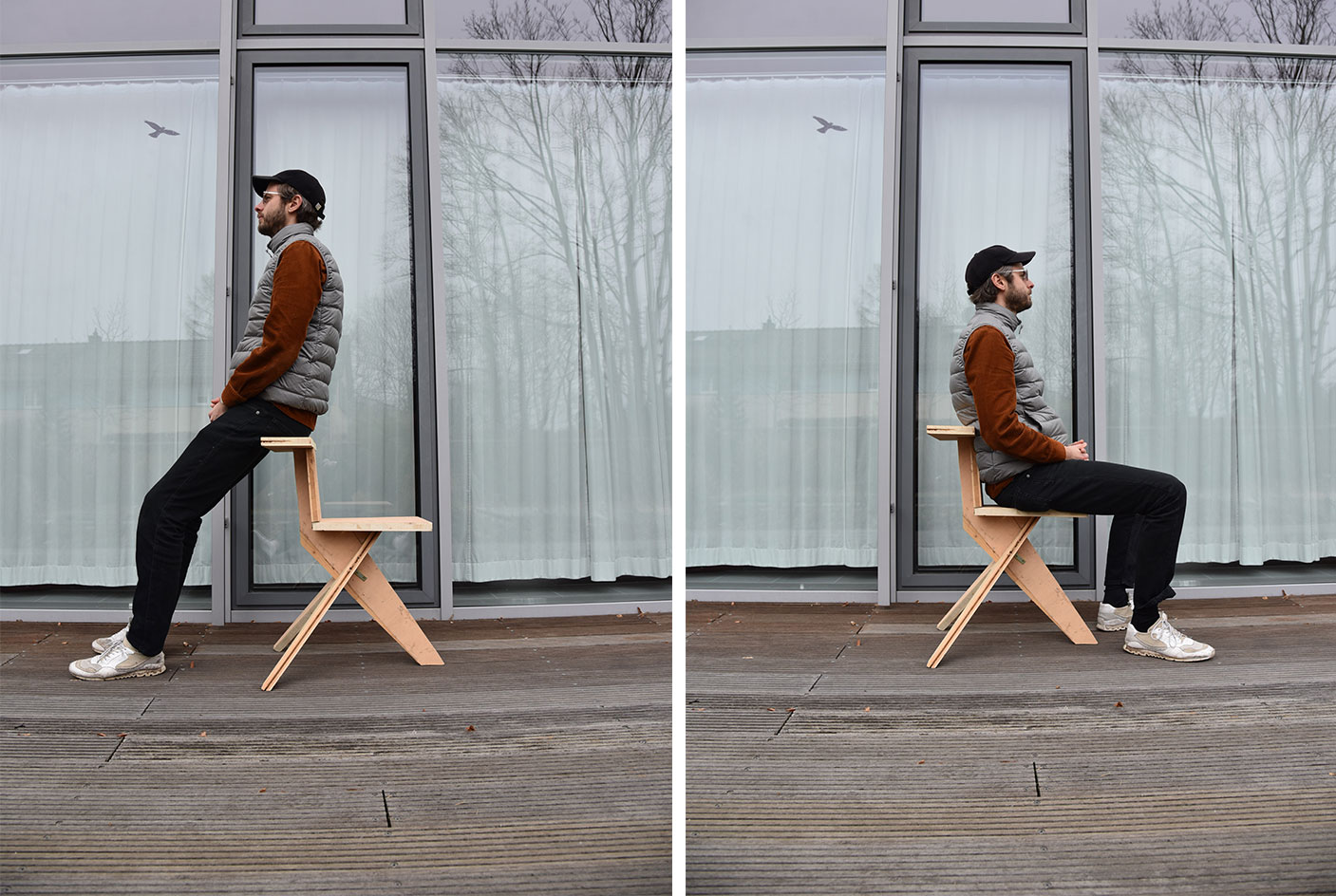
Pascal Hien, Migo 01
Berlin, Germany
Wood: Red oak
‘The pandemic was a time for pause and reflection, when we became more present with ourselves and our surroundings,’ observes Hien. His object, a multifunctional stool, is the result of the designer’s reflections during a time of change and uncertainty, learning to adapt and tune out of his fast-paced life. The stool represents this ever-changing life: ‘you can adapt it in various ways, there is no front or back, no right or wrong.’ It’s a helper around the house or a place to sit. While living with his family during the pandemic, Hien involved them in the testing of the piece, for the first time making them a part of his design work.

Kodai Iwamoto, Pari Pari
Tokyo, Japan
Wood: Red oak
For his project, Iwamoto researched traditional Japanese techniques, such as uzukuri (giving texture to wood by scrubbing) and chouna (chiselling the surface with an adze), and then started experimenting directly on the wood, peeling its layers to create a new veneer. These imperfectly textured panels became the starting point for a design exploration that landed him on a round table shape, featuring the subtle material as the base to create the effect of an ancient tree trunk.

Josh Krute, Toteemi
Helsinki, Finland
Wood: Hard maple
Inspired by totems (toteemi meaning ‘totem’ in Finnish), Krute created a multifunctional storage system. As domestic spaces get taken over by work materials during time at home, Krute imagined a series of stackable boxes to stow work supplies and small objects, while other components serve as a side table, tray or stools. The modular system looks at tactile wooden objects, birdhouses and small structures, which Krute streamlined into a compact, practical design. ‘Toteemi provides solutions for how we delve between living and working in the same environment,’ he says.
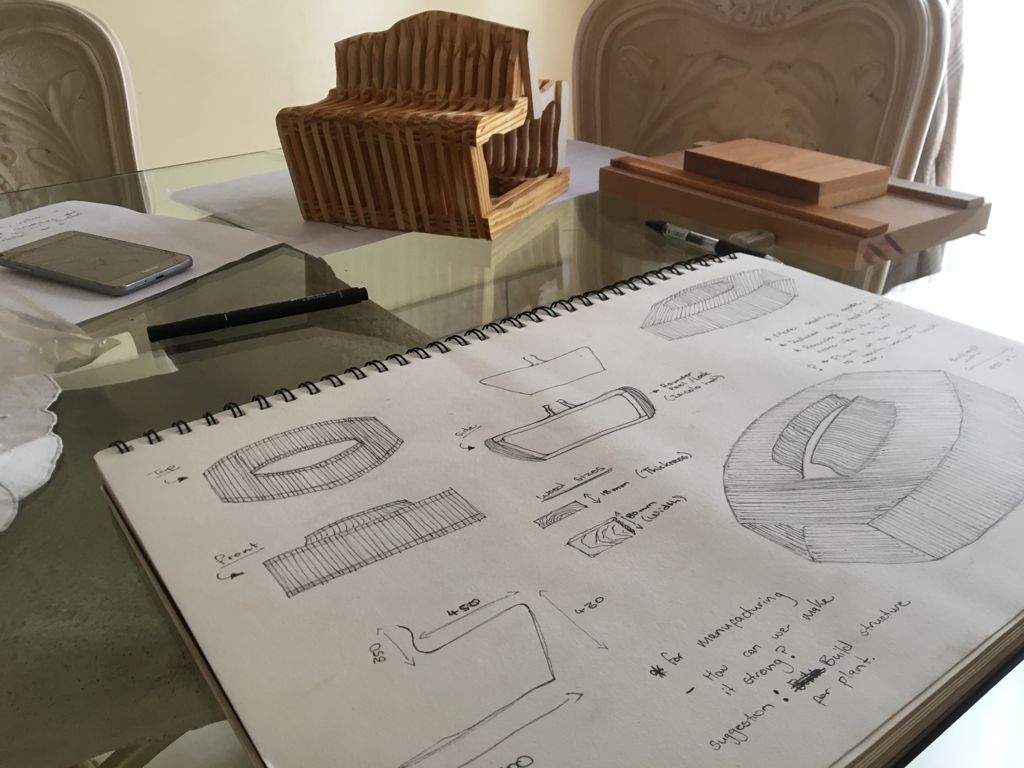
Siyanda Mazibuko, Kumsuka (Evolve Your Space)
Johannesburg, South Africa
Wood: Thermally modified red oak
The inspirations for Mazibuko’s piece included isicholo, a hairstyle symbolising tribal identity in several African cultures, and indlamu, a tribal Zulu dance practised in celebratory ceremonies. He paired these visual references with a reflection on themes of engaging, human behaviour, and the role of design in people’s lives. ‘Engaging with other people is an intrinsic human trait,’ he says, citing this as the reason for his design, a modular, layered seat imagined for public spaces. He took a practical approach, looking into ergonomics and function to create his bench, composed of interlocking strips of timber.
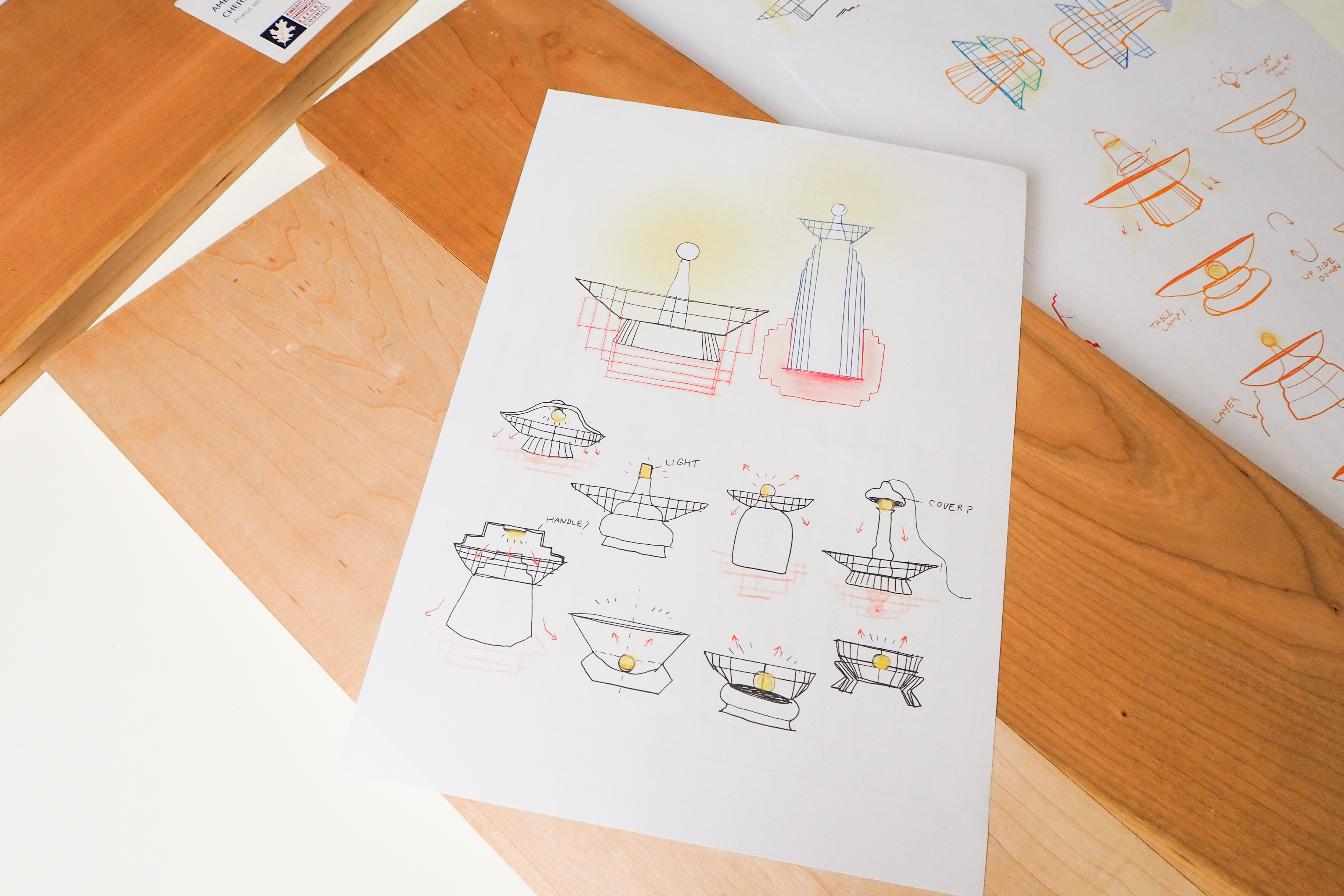
Mew Mungnatee, Corners Lamp
Bangkok, Thailand
Woods: Soft maple and cherry
Mungnatee’s emotional response to the objects surrounding her manifested in the relationship between form, light and shadow, and through this project, she explored this connection through geometry. Her lamp designs, inspired by pagodas, are based on a bulb casting a shadow over surfaces below thanks to an intricate grid composition featuring wooden slats and indented corners.

Trang Nguyen, The Roof Stool
Ho Chi Minh, Vietnam
Wood: Cherry, red oak and hard maple
Nguyen looked at traditional Vietnamese roof tiles for her project, creating a collection of nesting stools that replicate the way the tiles overlap to hide the connecting structures below. Her simple stool design is inspired by traditional temple architecture and Vietnamese dresses, and features pins made of contrasting wood at the joint, which remains hidden when the stools are stacked and is revealed when in use. As people were spending more time at home, her design is imagined to provide extra seats, while creating a beautiful composition when not in use.
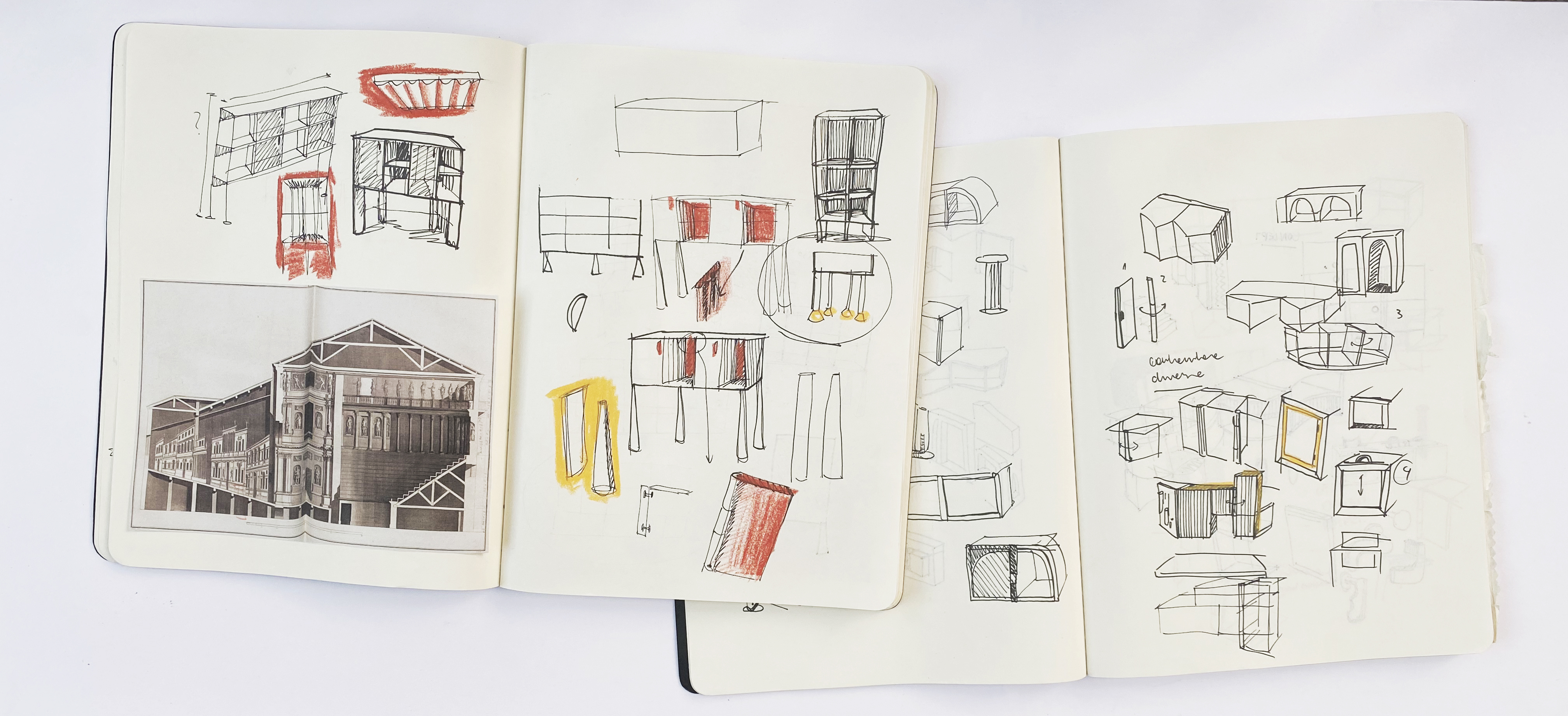
Alessandra Fumagalli Romario, Studiolo 2.0
Milan, Italy
Wood: Cherry
During extensive Zooming, video meetings and Insta-lives, Fumagalli Romario observed people’s curated backgrounds, which got her thinking about ‘the importance of objects as extension of ourselves: from one side, many boundaries are created, from another, boundaries disappear, private and public are mixed together’. She likened this curated space to the small studioli found in Renaissance paintings, and to cabinets of curiosities. Inspired by this, she created a visual background, a cabinet to present oneself through objects that could be exhibited or hidden. Using wood to convey depth, her design is a compact architecture that has both practical and aesthetic purpose.

Taiho Shin, Ikare
Seoul, Republic of Korea
Wood: Hard maple
During his time in isolation, Shin noted that ‘objects help human resilience through unusual situations’, and this thought served as the basis for his project. Guided by the ‘Ikea effect’ (consumers place higher value on products they partially created), he thought of a half-made design that users could partly assemble to foster interaction with their objects. He created one small table, put together thanks to an ingenious but simple-to-use joint system (no glue necessary), and the design multiplies to create a stackable system of shelves, suitable for different spaces.
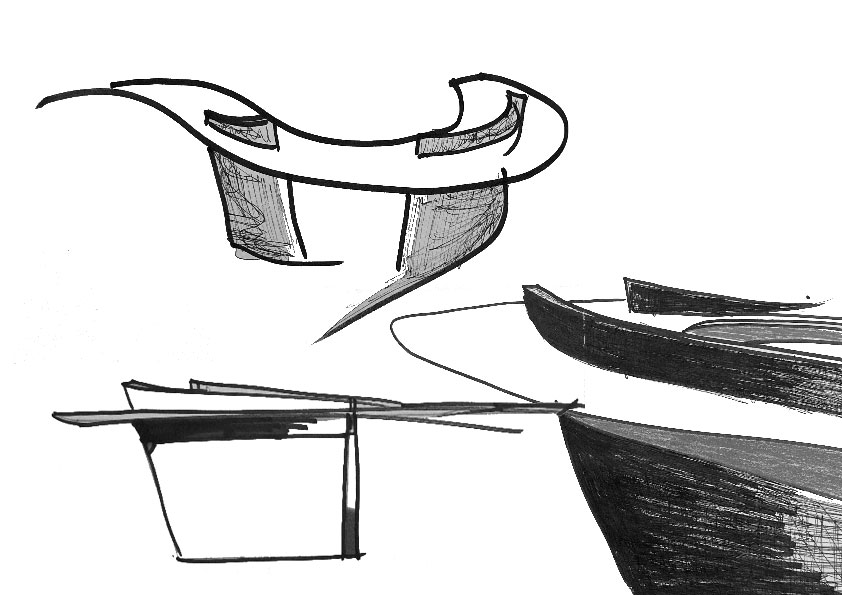
Mimi Shodeinde, Howard Desk
London, UK
Wood: Hard maple
The pandemic world is all about newness, observes Shodeinde: new dangers, and new ways of interacting, living and working. ‘In designing furniture for this new paradigm,’ she says, ‘we should lean into the familiar and the comforting. We should seek freedom, connection, stability and strength.’ These qualities are to be found in her design: a solid desk whose light forms contrast with the rigorous construction and weight of the wood. The designer looked to a vast pool of cultural references, from the compositions of British sculptor Barbara Hepworth to the modernist architecture of Lina Bo Bardi, and the aerodynamics of flight (pilot Howard Hughes inspired the name of the piece): these influences converged into a sinuous silhouette, a design that challenges the familiar but also offers a sense of safety.
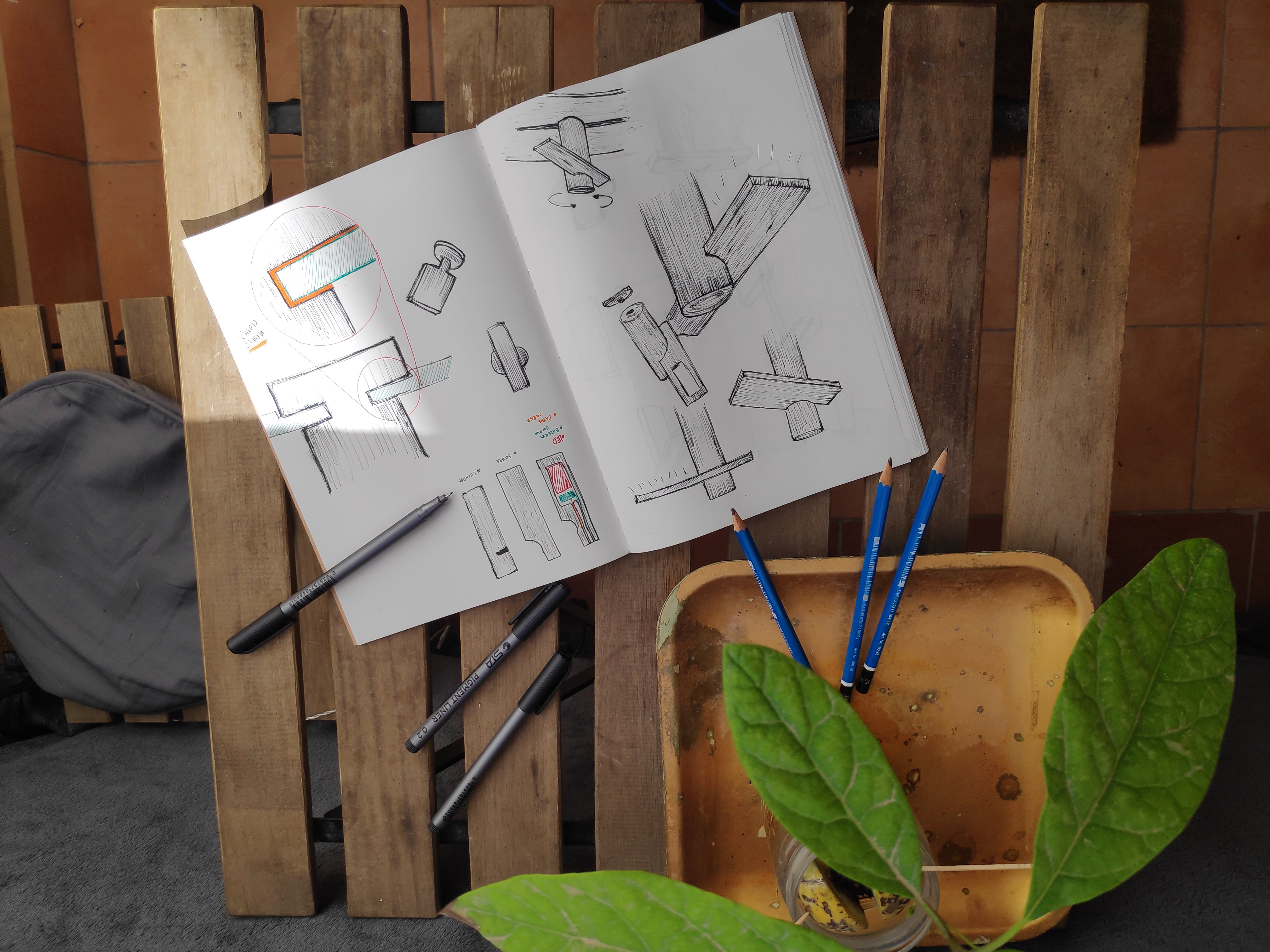
Juan Carlos Franco & Juan Santiago Sierra, Riverside
Colombia, Spain
Wood: Cherry
During isolation, objects change their function and their meaning, and we find ourselves looking for space within our space. This was the observation that kicked off Franco and Sierra’s project, which looked at how our furniture changes function and how adaptability is key (in a pandemic as much as in modern living). Inspired by adaptable design (such as Colombia’s pile dwelling houses), they created a bench that suits different needs, thanks to the addition of accessories such as backrests and trays that fuse into a central fissure. This way, the bench becomes a multifunctional space that can adapt to home, workspace or public environment.

Ivana Taylor, Reframe
Adelaide, Australia
Woods: Hard maple, cherry and red oak
Taylor’s own experience of solitude led to extensive periods of reflection, ultimately inspiring the designer to change her approach to designing and making. For this project, she aimed to ‘design a contemplative sculptural object that triggered reflection on the multi-layered nature of any experience, including isolation’. A recurring theme of her research featured ways of framing the view at different scales, and the resulting design is a sculpture made from a series of small carved objects that layer to create a composition acting as a ‘sculpted path for light’.

Martin Thübeck, Rå
Stockholm, Sweden
Wood: Red oak
While confined at home with his young children, Thübeck found inspiration in the way they innately adapted their surroundings for play, challenging traditional ways to use furniture: ‘limitations became possibilities’, he commented. After looking at traditional furniture and playground equipment, he developed a piece whose construction is informed by traditional Swedish craftsmanship traditions, and whose function can be interpreted both as a chair or a slide by flipping it upside down. ‘This piece is a symbol of coexistence, and the act of turning it is like moving between worlds,’ he says, citing a combination of approaches that merges indoor and outdoor, static and movement, adults’ and kids’ points of view. ‘My intention is not to fully merge the two functions, but to see what happens when they are so close to each other that they become one,’ he says.
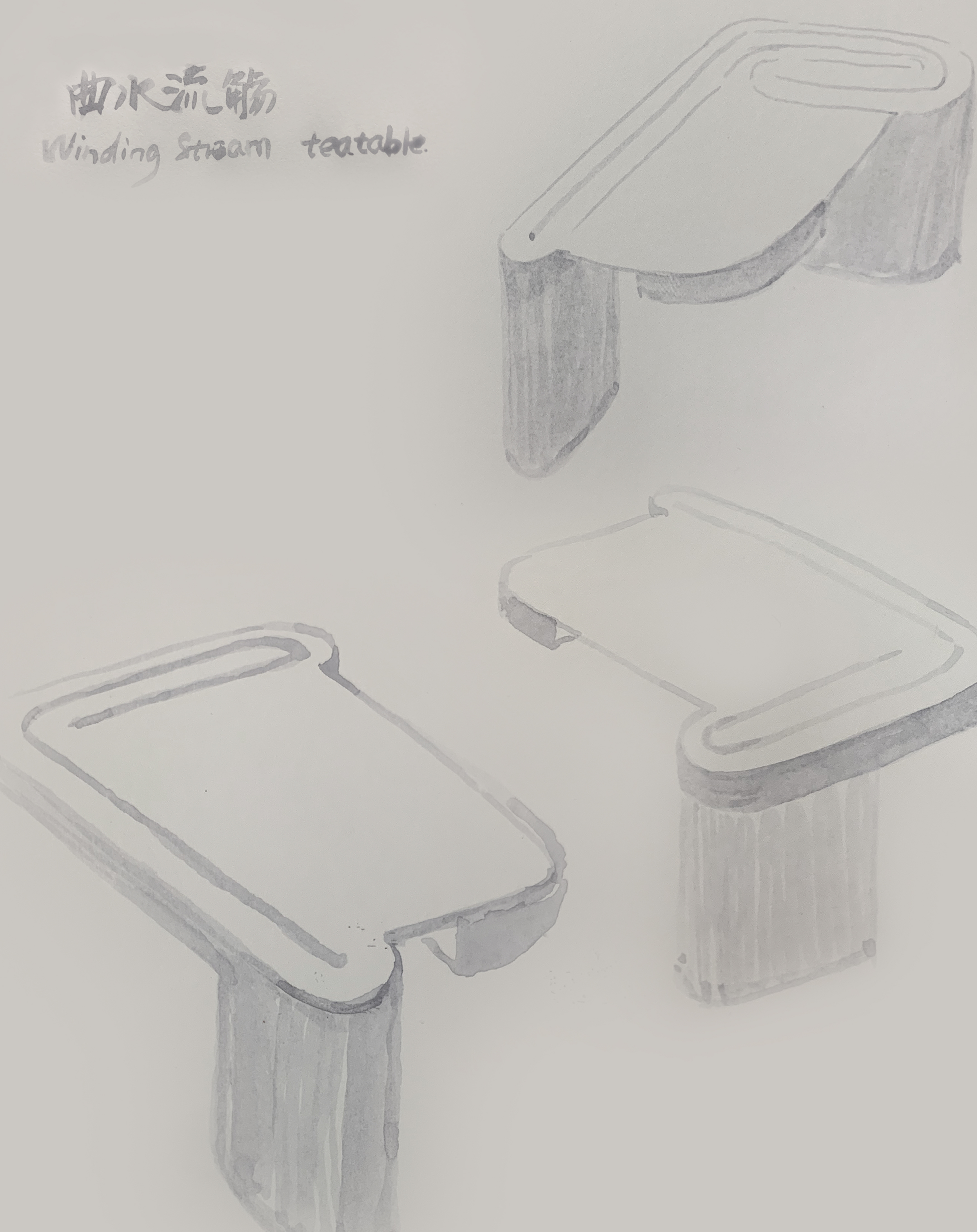
Yunhan Wang, Winding Stream
Zhuhai, China
Wood: Hard maple
Unable to perform habitual traditions during lockdown, people are confined to performing rituals at home. There is a novel need for suitable furniture and objects that can fit a small space but serve the same purpose. Wang wanted to create a domestic alternative to the ‘winding stream party’, a Chinese drinking custom in which poetry is composed while a cup is floated down a stream with people sat on both sides; the person sitting in front of the cup that stops has to drink it. Inspired by Hakka round houses, Wang created a compact table design with storage concealed in the legs and a central slit to fit trays and cups.

Vivienne Wong, Iuxta Me
Melbourne, Australia
Wood: Cherry
Dancer-turned-designer Wong looked at non-verbal communication as the starting point of her project, approaching the task from a personal point of reflection and knowledge. ‘I wanted to translate my previous understanding of how we can connect and communicate to one another,’ she says, looking to create a piece to nurture strength, intimacy and connection. Invisible physical boundaries and the creation of textures through light formed the basis of the project, which developed into a coffee table featuring interlocking echoed forms, where the functional joinery also becomes a decorative motif for the piece. Her design’s name, Iuxta Me (meaning ‘beside me’ in Latin), represents the desire for human connection and closeness that guided the process.
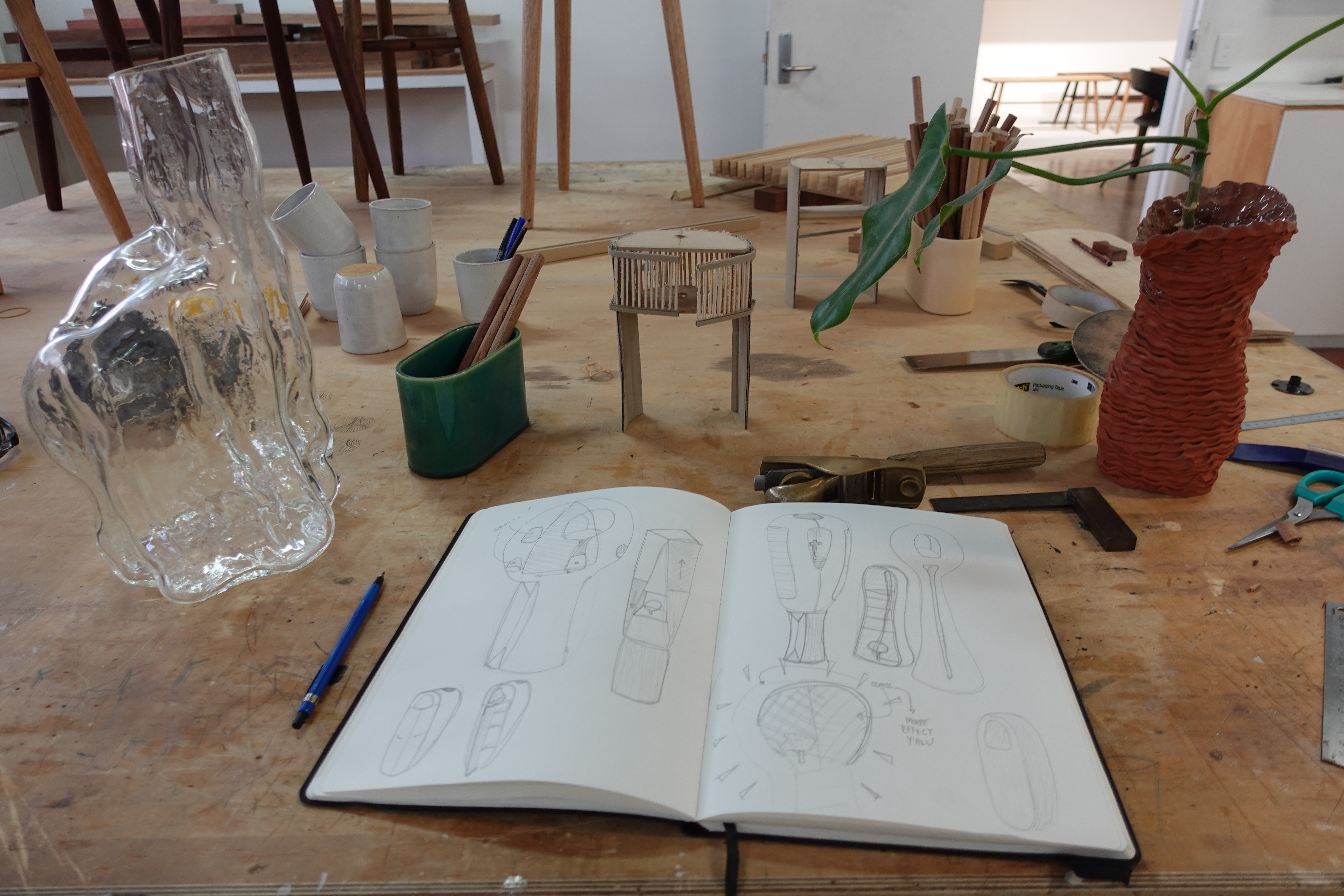
Tan Wei Xiang, Recollect
Singapore
Woods: Hard maple and red oak
Searching for a tangible physical connection to loved ones (beyond virtual calls), Tan resorted to keepsakes as a way to fight nostalgia. His keepsakes cabinet is imagined as a way to hold, preserve and give respect to the items we hold dear, and its forms were inspired by Singapore’s ubiquitous construction sites and the ridged zinc sheets used to protect them. Tan recreated this motif as the outer shell of his tall, lean cabinet, and created curved shelves to sit inside it, with a mirrored, polished brass circle, mimicking the sun setting on the horizon.
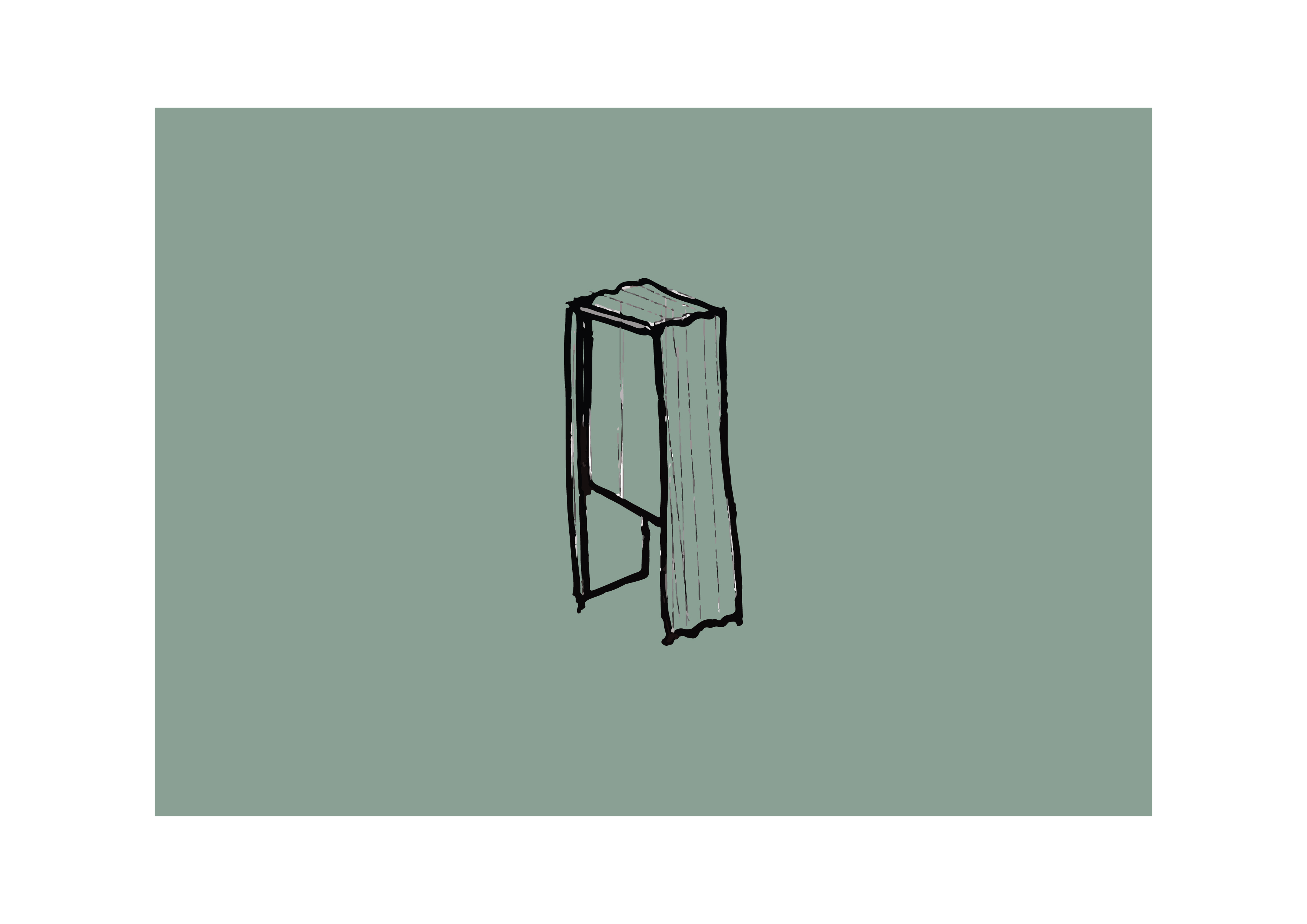
Duncan Young, Shelter Within
Adelaide, Australia
Wood: Hard maple
Young focused on the materiality of timber, and how this organic material can help us connect with nature while confined at home. ‘For those in dense urban environments, lockdowns have impacted our physical and mental strength by limiting the biological need humans have for being in outdoor spaces,’ he says. He looked at studies analysing the positive impact of nature on physical and mental health, and as a result he created a modern cabinet of curiosities as a pillar to nature, for the user to engage with the natural world while at home. Featuring a solid carcass with discreet joinery and a moiré effect shelf (a design inspired by the historic symbolism of the cabinet as a theatre), the simple plinth celebrates wood by recreating the effect of walking into a glade.
INFORMATION
The twenty pieces have been made by Benchmark Furniture (UK), Evostyle (Australia), Fowseng (Malaysia) and Wewood (Portugal). Discovered is on view at the Design Museum 13 September-15 October 2021
discovered.global
designmuseum.org
ADDRESS
224-238 Kensington High St
London W8 6AG
Rosa Bertoli was born in Udine, Italy, and now lives in London. Since 2014, she has been the Design Editor of Wallpaper*, where she oversees design content for the print and online editions, as well as special editorial projects. Through her role at Wallpaper*, she has written extensively about all areas of design. Rosa has been speaker and moderator for various design talks and conferences including London Craft Week, Maison & Objet, The Italian Cultural Institute (London), Clippings, Zaha Hadid Design, Kartell and Frieze Art Fair. Rosa has been on judging panels for the Chart Architecture Award, the Dutch Design Awards and the DesignGuild Marks. She has written for numerous English and Italian language publications, and worked as a content and communication consultant for fashion and design brands.
-
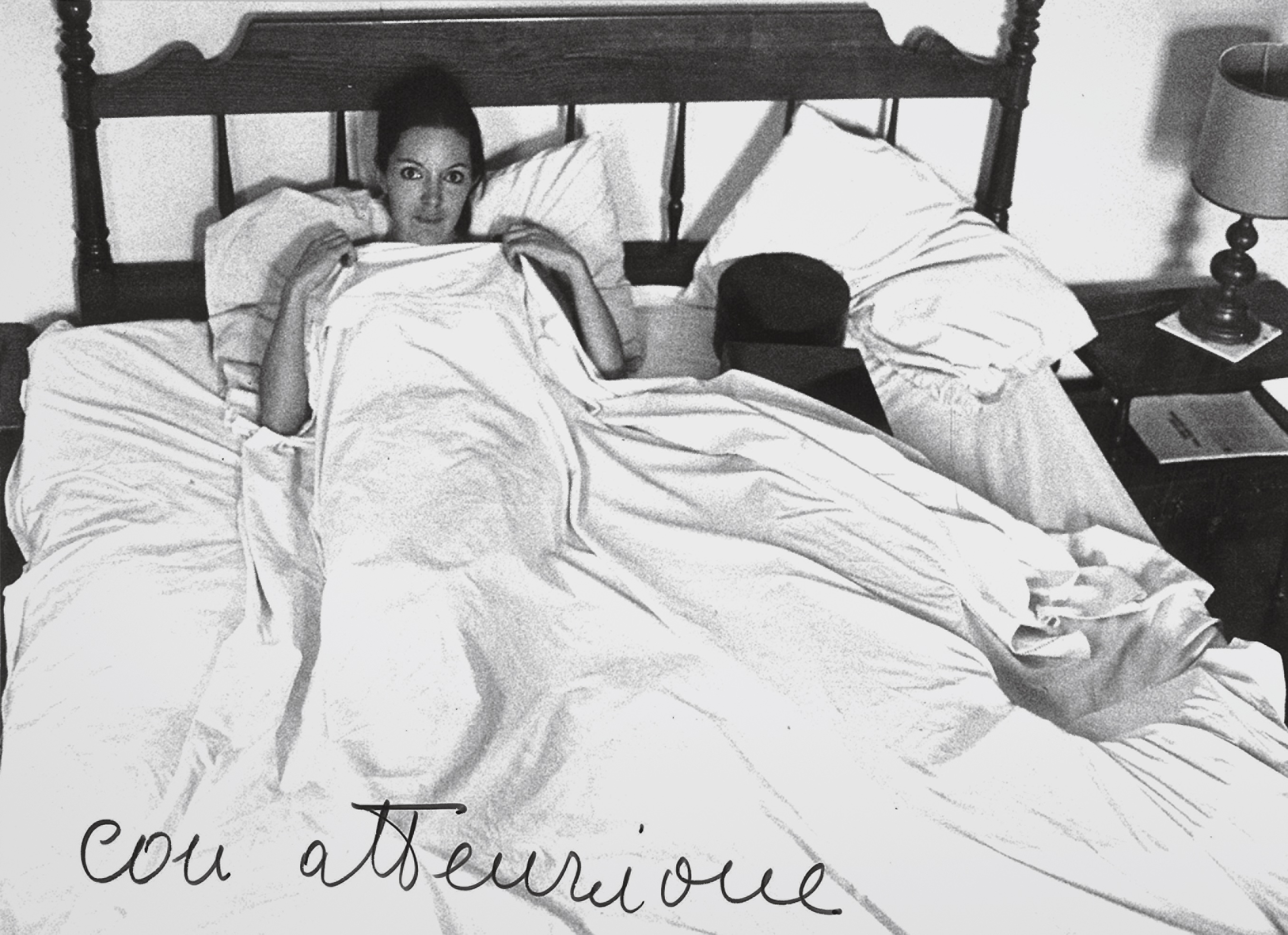 Valie Export in Milan: 'Nowadays we see the body in all its diversity'
Valie Export in Milan: 'Nowadays we see the body in all its diversity'Feminist conceptual artists Valie Export and Ketty La Rocca are in dialogue at Thaddaeus Ropac Milan. Here, Export tells us what the body means to her now
-
 Martell’s high-tech new cognac bottle design takes cues from Swiss watch-making and high-end electronics
Martell’s high-tech new cognac bottle design takes cues from Swiss watch-making and high-end electronicsUnconventional inspirations for a heritage cognac, perhaps, but Martell is looking to the future with its sharp-edged, feather-light, crystal-clear new design
-
 In 2025, fashion retail had a renaissance. Here’s our favourite store designs of the year
In 2025, fashion retail had a renaissance. Here’s our favourite store designs of the year2025 was the year that fashion stores ceased to be just about fashion. Through a series of meticulously designed – and innovative – boutiques, brands invited customers to immerse themselves in their aesthetic worlds. Here are some of the best
-
 Step inside Faye Toogood's intimate cabinet of curiosities at PAD London
Step inside Faye Toogood's intimate cabinet of curiosities at PAD LondonFor PAD London 2025, (until 19 October) Faye Toogood presents The Magpie’s Nest with Friedman Benda
-
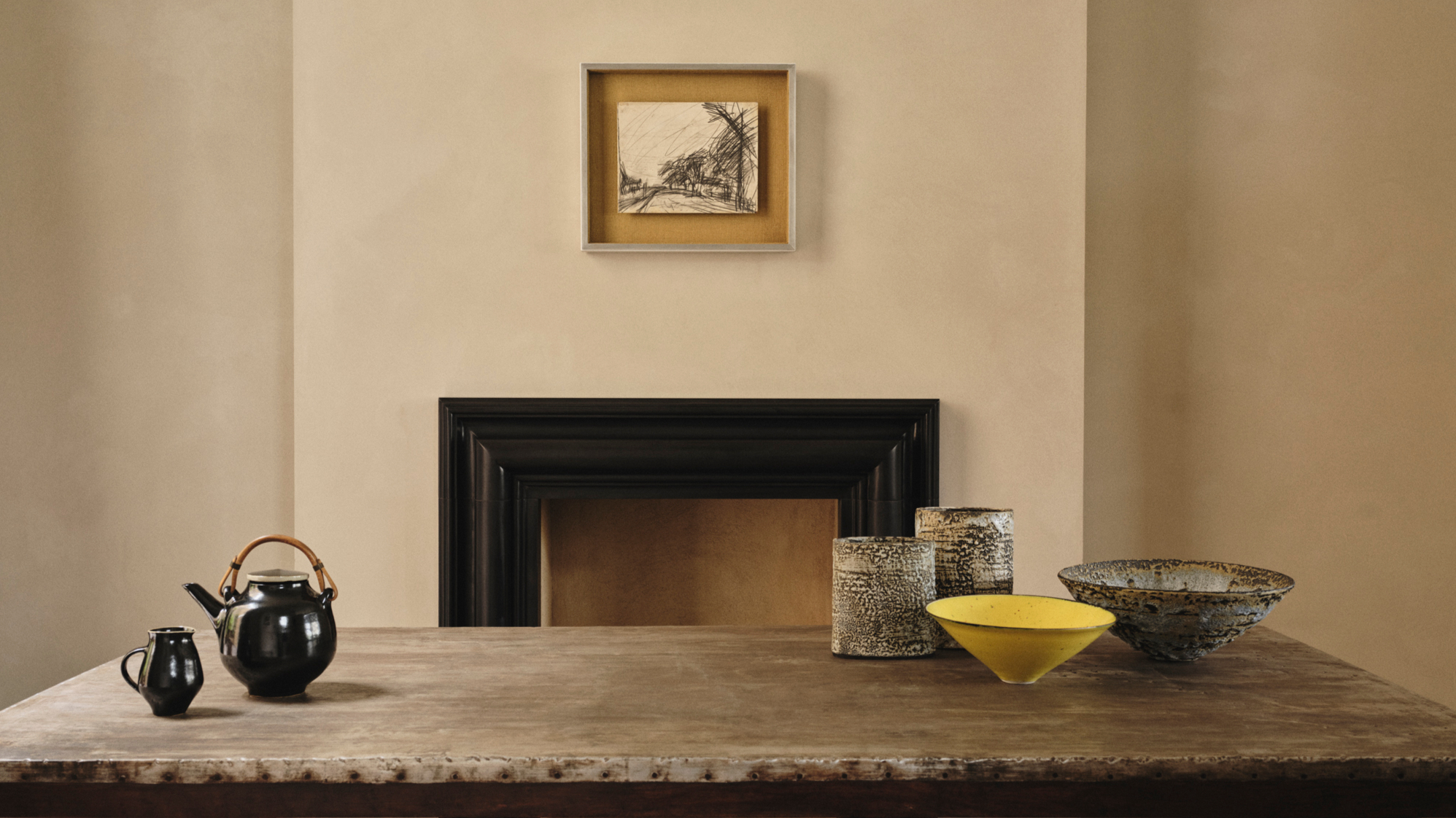 Rajan Bijlani opens his Primrose Hill home for ‘Electric Kiln’
Rajan Bijlani opens his Primrose Hill home for ‘Electric Kiln’In his London home – once the studio of ceramicist Emmanuel Cooper – Rajan Bijlani stages ‘Electric Kiln’, uniting Frank Auerbach, Lucie Rie and Cooper in an intimate reflection on the creative spirit of postwar London
-
 These are the design exhibitions to see in London during Frieze Week
These are the design exhibitions to see in London during Frieze WeekWe round up the best design events happening in London in conjunction with Frieze Week 2025: discover collectible design and craft across the city
-
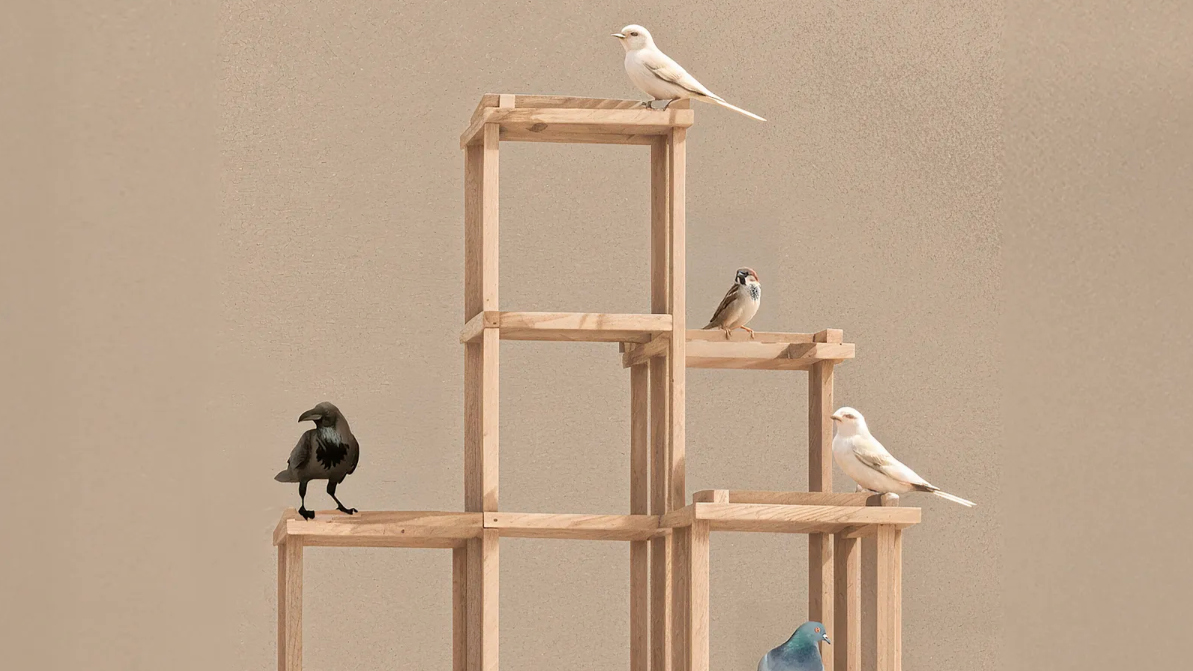 Norman Foster and nine other architects design birdhouses for charity – you can bid
Norman Foster and nine other architects design birdhouses for charity – you can bid‘Architects for the Birds’ is spearheaded by Norman Foster and the Tessa Jowell Foundation to raise funds to improve treatment for brain cancer. Ten architect-designed birdhouses will go up for auction
-
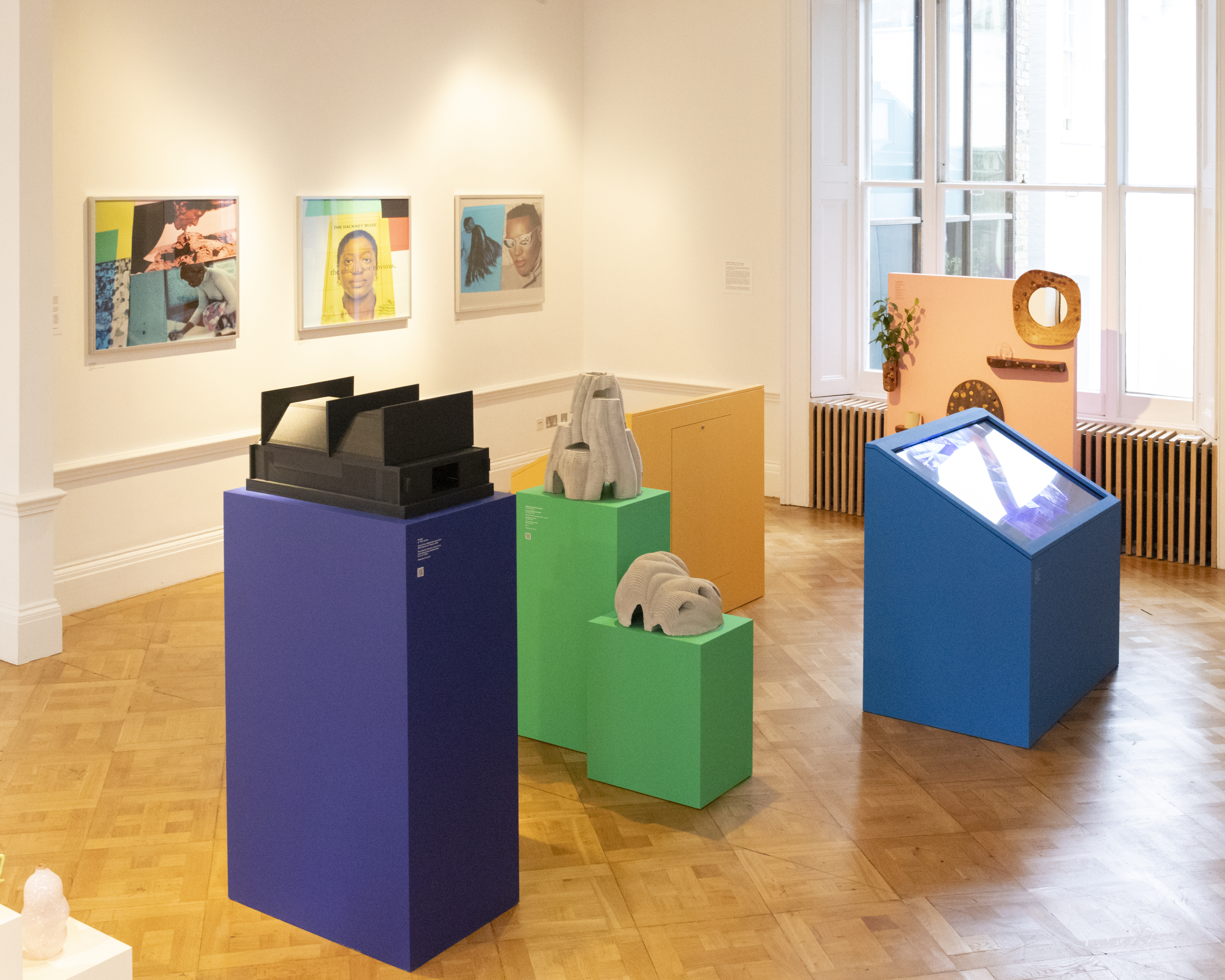 The David Collins Foundation celebrates creativity in all its forms at London Design Festival
The David Collins Foundation celebrates creativity in all its forms at London Design FestivalThe David Collins Foundation presents ‘Convergence’ at the Lavery during London Design Festival 2025 (on view until 19 September), featuring works from the Arts Foundation’s annual Futures Awards
-
 Lee Broom’s brutalist-inspired ‘Beacon’ will light up London as Big Ben strikes the hour
Lee Broom’s brutalist-inspired ‘Beacon’ will light up London as Big Ben strikes the hourSet to pulse through London Design Festival 2025 (13-22 September) and beyond, the British industrial designer’s sculptural light installation on the South Bank draws on its surroundings
-
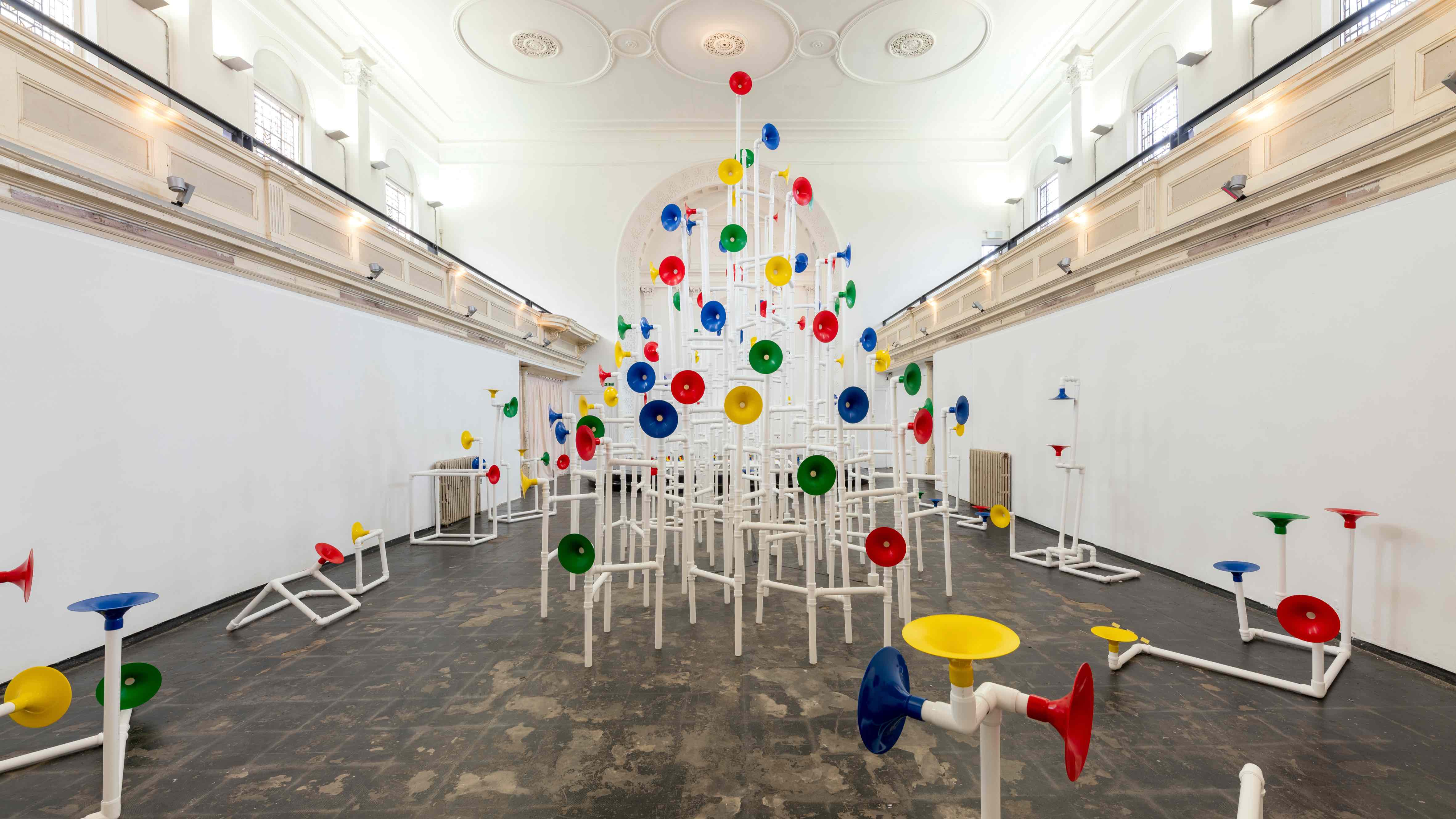 Yuri Suzuki turns sound into architecture at Camden Arts Projects
Yuri Suzuki turns sound into architecture at Camden Arts ProjectsThe sound designer unveils ‘Utooto’, an interactive installation at London’s Camden Arts Projects (until 5 October 2025), in which visitors collaboratively build a sonic piece of architecture
-
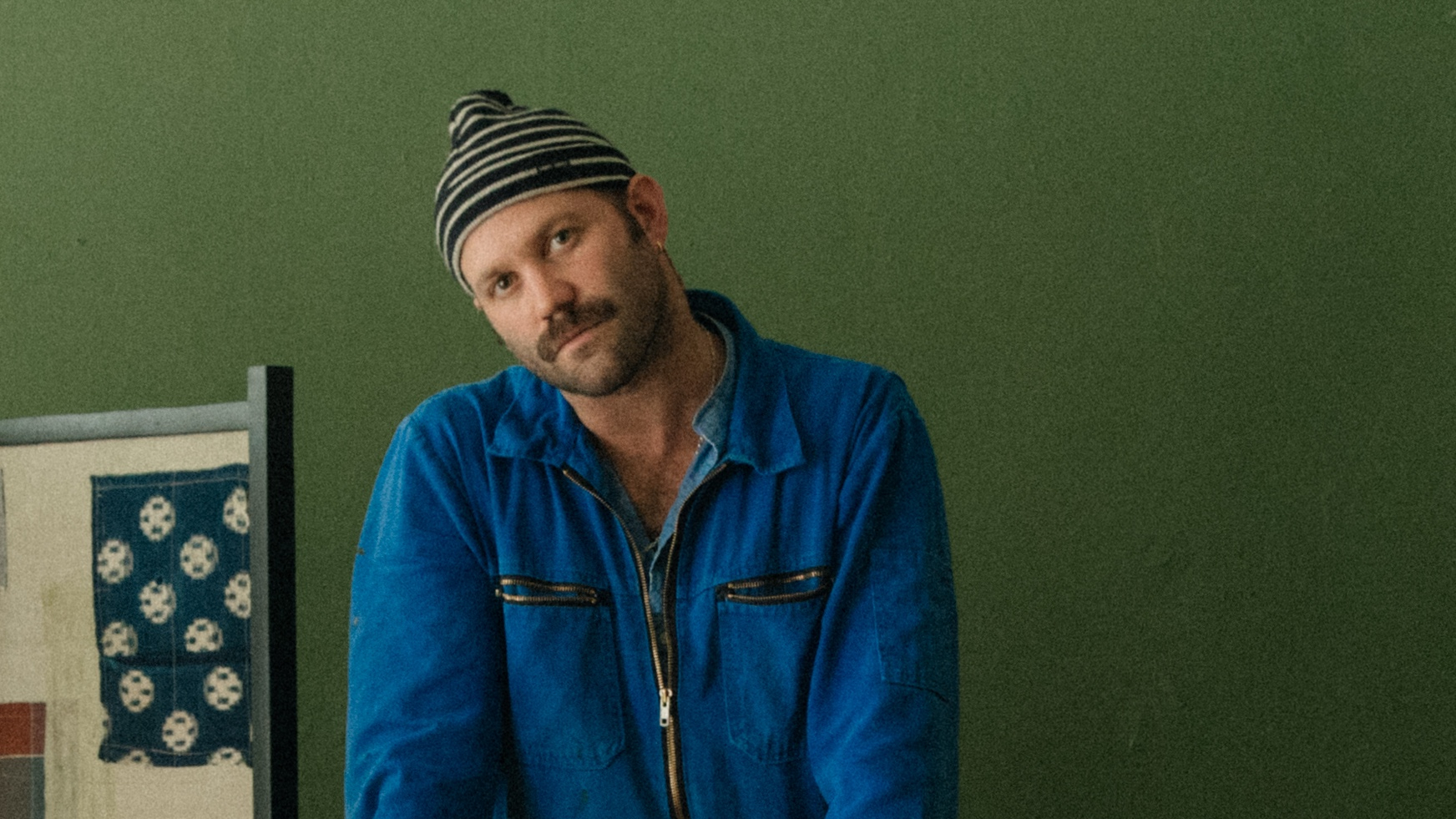 Alex Tieghi-Walker unveils his plans for Brompton Design District 2025
Alex Tieghi-Walker unveils his plans for Brompton Design District 2025Ahead of London Design Festival 2025, we catch up with New York gallerist Alex Tieghi-Walker about his appointment as curator of the Brompton Design District programme